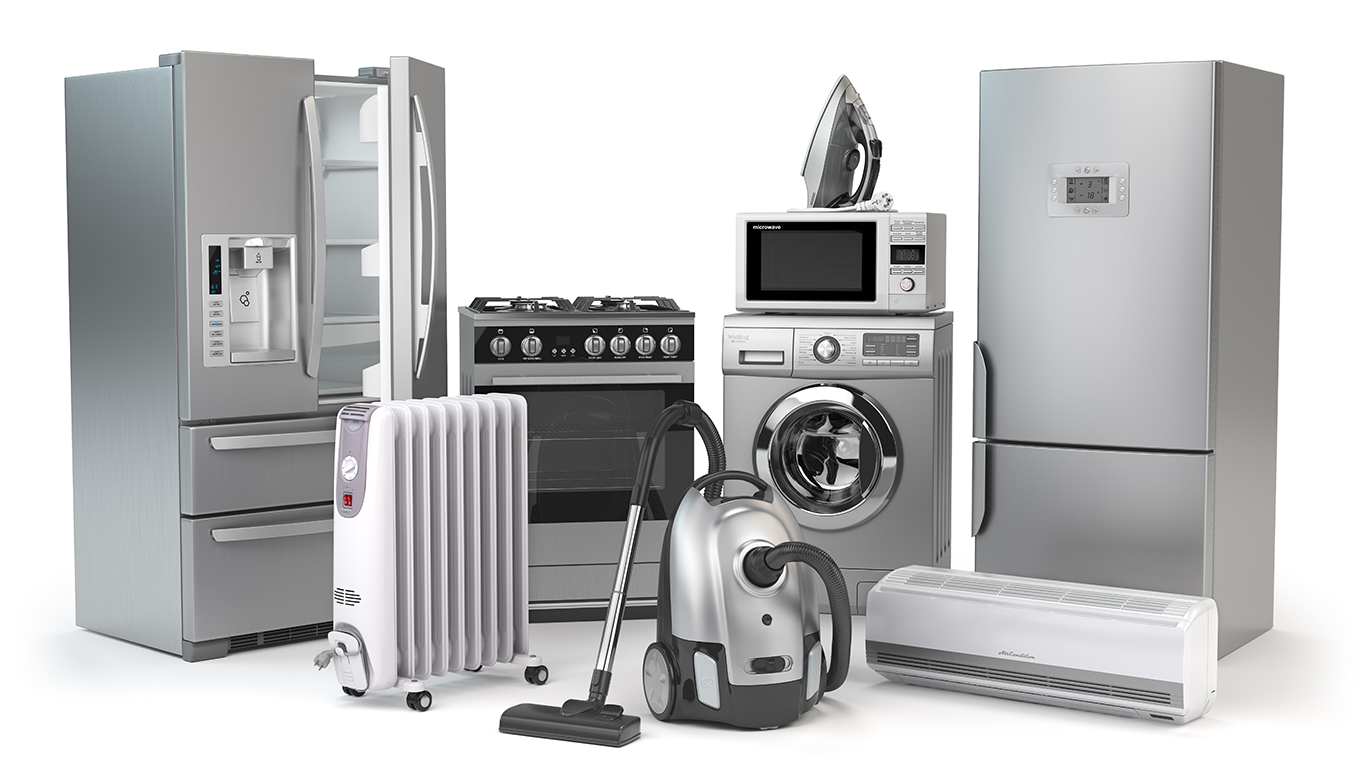Technology makes life easier. It also speeds it up quite a bit. This is certainly the case in the kitchen, as well as the household in general.
Tasks like washing the dishes and doing the laundry, which used to take a whole Sunday afternoon, are now left to machines. This saves people a lot of time that can be used for more pleasant activities, such as resting.
Thanks to smart inventors, some ordinary tasks like grating cheese and toasting bread are simply a lot safer. You no longer have to worry about cutting your fingers, burning your hands, or causing a fire because you forgot to turn off the stove.
People keep inventing new devices and appliances, making everyday chores even more automated than they already were. Every year, hundreds of thousands of utility patent applications are filed with the U.S. Patent and Trademark Office. Approximately half of them are granted.
To compile this list of useful appliances invented over the last century, 24/7 Wall St. looked at company websites, reference materials, and media sources. We considered products that have significantly changed how a household task is performed and products that are still in use, even though they have been improved on over the years.

The vacuum cleaner
Can you even imagine how you would clean a carpet or a rug if you could not use a vacuum cleaner? The very first device used to clean the floor goes back to the turn of the 16th century, but the first motorized vacuum cleaner was patented in 1901. It looked like a horse-drawn cart and was very impractical.
In 1907, James Spangler, a janitor in Ohio who had asthma, invented an electric suction-sweeper, which became the first portable domestic vacuum cleaner. It used an electric fan to create suction, rotating brushes to collect dirt, a pillowcase for a filter, and a broomstick for a handle.
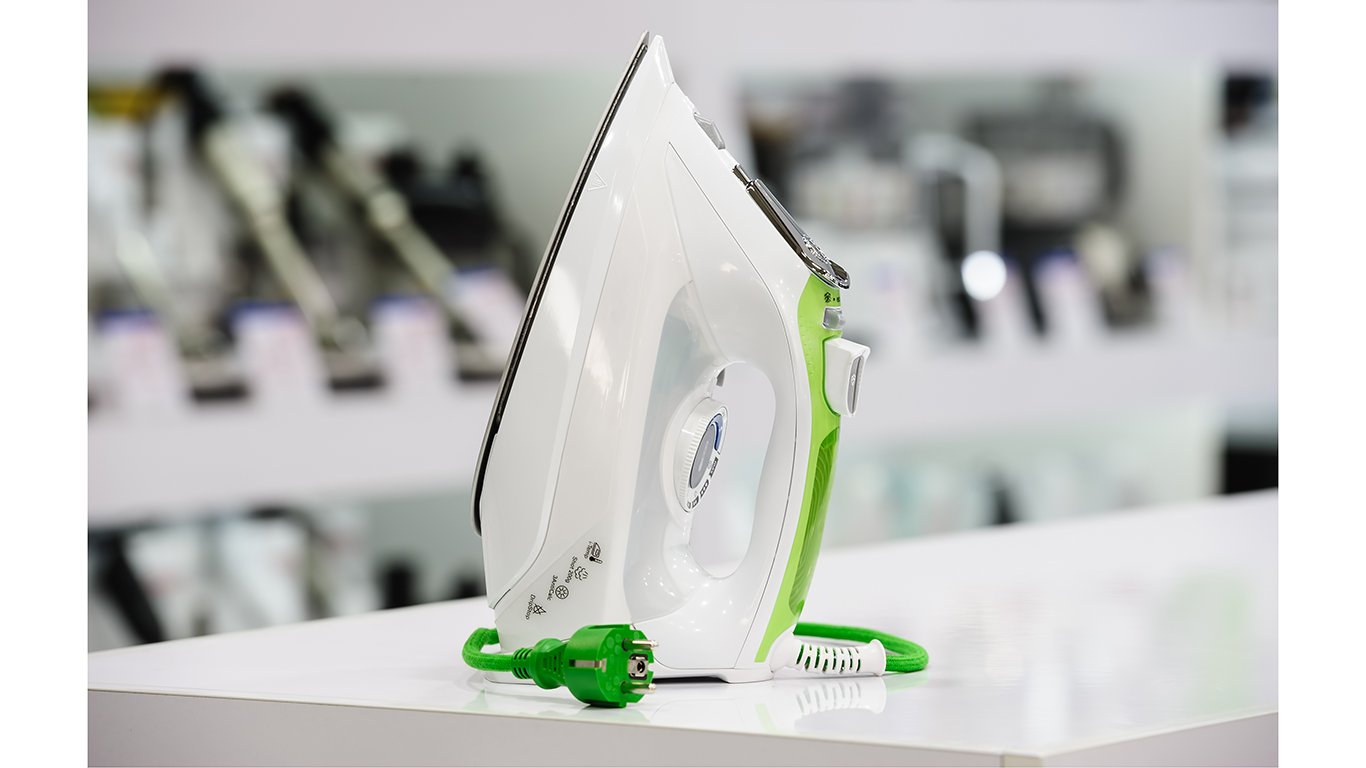
Electric iron
Many people prefer to just get their clothes dry cleaned. Who has an entire afternoon to iron and fold clothes, right?
But until this option was so widely available, the lightweight electric iron made people’s lives easier. It was invented by Earl H. Richardson in 1905. Heat was concentrated at the forward point of the soleplate — the so-called hot point, which everyone loved. The hot point iron was the first commercially successful electric laundry iron.

Home refrigerator
Various methods for keeping food cold so it can last longer have been around for centuries. But the first fridge for home and domestic use was invented in 1913 by Fred W. Wolf.
The appliance was a small unit sitting on top of an ice box. But it required external plumbing connections. In 1916, Alfred Mellowes worked on a fridge with a compressor at the bottom. More efficient refrigerators started to be mass-produced in the 1970s.

Electric dishwasher
How many important tasks can you finish during the time you’d normally spend doing the dishes? Hand-powered dishwashers had been around for more than 40 years before the first electric dishwasher became widely available for sale in 1930. It was invented by the Walker Brothers Company in Philadelphia in 1913.

Washing machine

Dryer
Taking clothes out on the balcony or yard to hang them on a clothesline so they could dry naturally was the way to go. But it was a real nightmare when you had to do this in the winter. J. Ross Moore invented the first electric dryer in 1935. He built an oil-heated drum and put it in a shed where his clothes would be placed until they dried. Hamilton Manufacturing Company started manufacturing gas and electric dryers in 1938.

Garbage disposal
John W. Hammes, who was an architect, created the first garbage disposal in 1927, after working on it in his basement for about a decade. He was looking for a way to make cleaning the kitchen easier for his wife. The appliance used a centrifugal force to grind food that could then easily flush down the drain.

Electric toaster
The electric toaster simply made bread taste better (even though people have been toasting bread since Roman times). The first electric toaster was invented by Alan MacMaster in 1893 but the first commercially successful one was patented in 1909.
Frank Shailor of General Electric created a very basic appliance that had one heating element and nothing else, not even sensors. You had to decide when to turn the slice of bread if you wanted it toasted on both sides.

Automatic pop-up toaster
Breakfast would not be the same without it, and every kitchen has one. A decade after the huge success of the electric toaster came a safer version of it. In 1919, Charles Strite invented a toaster with a mechanism used to time how long each side was being toasted. It shut off automatically when the bread was toasted. This kind of pop-up toaster became widely available for sale in 1926.

Automatic coffee pot
Depending on who you ask, making coffee is an art or an exact science. In any case, making the perfect pot is not easy. But it was made just a little bit easier in 1952 when a coffee maker with a keep warm function was invented.
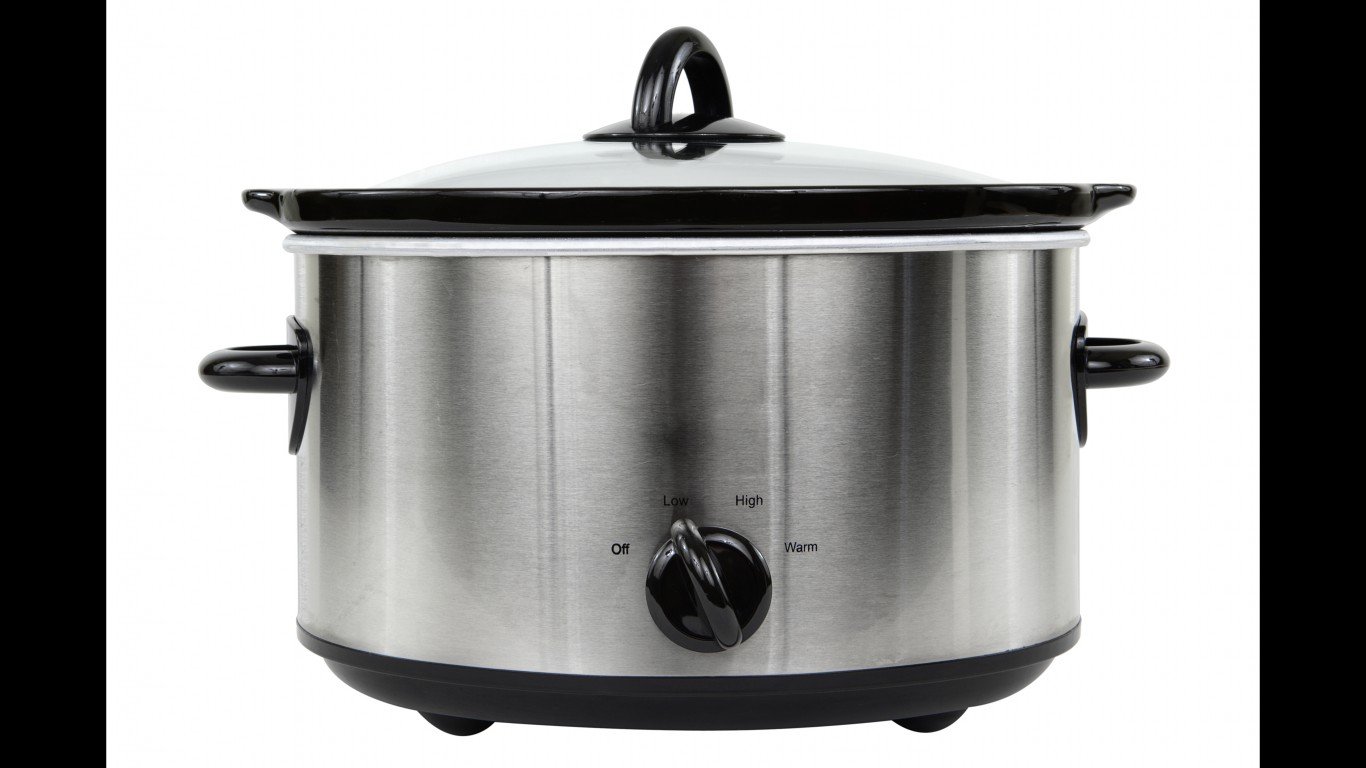
Slow cooker
Cooking is much easier, and for some people even more pleasant, when you can simply put the ingredients in a pot and let them cook by themselves.
While the Crock Pot has been very popular over the last few years, its origin goes back to 1936 when Irving Naxon, an inventor, invented a portable cooking device that evenly heated and cooked food. He got the idea from his grandmother, who liked to cook at night at a bakery using the fading heat, which would result in a dish being cooked all night.

Microwave
The microwave was an accidental invention. Percy L. Spencer realized in the 1940s that the vacuum tube he was working on could melt candy, cook eggs and pop popcorn kernels. He developed a metal box and used microwave power to turn it on. The first commercially available microwave was 5.5 feet tall and weighed about 750 pounds.

Air conditioner
Can you imagine summers without it? They would be unbearable, if not lethal. This artificial savior from the heat has a long history. It goes back to 1902 when a young New Yorker, Willis Carrier, created a mechanical unit blew air that was first filtered through water-cooled coils. The appliance was meant to control humidity, not to keep people cold, but does it matter in the end? It was the first modern day air-conditioning system.
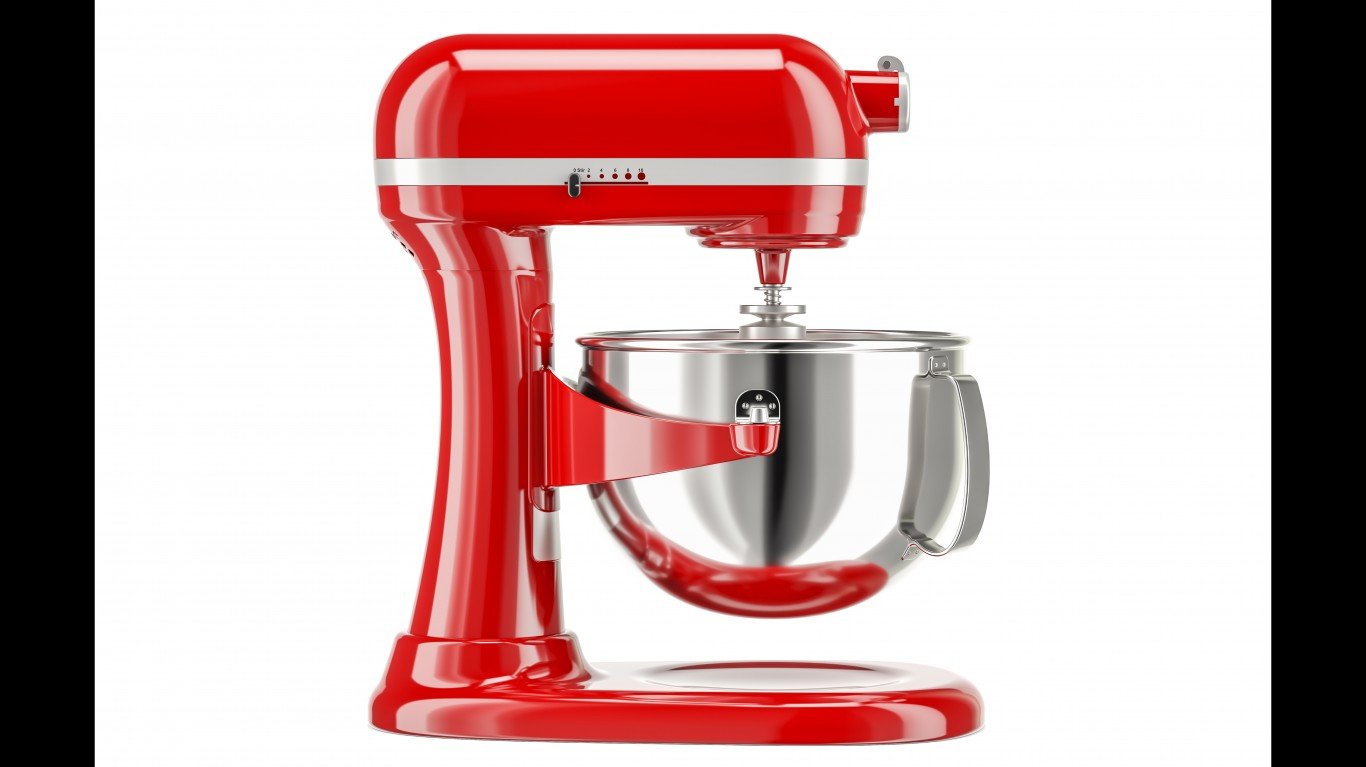
Home stand mixer
Bread, cakes and all kind of delicious treats would not be the same without this device. Maybe fewer people would make them if they didn’t have a mixer that does some of the hard work — mixing the dough. Herbert Johnson, who was an engineer, invented the first standing mixer in 1908. By 1915, most bakeries had one. Hobart Mfg. Co, now known as KitchenAid, started selling the mixer, then called a food preparer, for the home in 1919.

Humidifier
Few appliances are more useful in the winter when dry air is a problem, especially for babies and little kids who are especially prone to dry skin and nosebleeds. Humidifiers take care of the problem by putting moisture back into the air.
Devices to help with dry air go back at least to the 1930 when steam inhalers were used. Refillable metal humidifiers were constructed in the 1940s. Oxygen humidifiers with refillable glass reservoirs were introduced a decade later. In 1964 Raymond Banks received a patent for a room humidifier.

Can opener
Canned food goes back to Napoleonic times when the emperor offered an award to anyone who came up with a way to preserve foods for a long time so his army wouldn’t starve to death during his campaigns. The first can opener was invented about 60 years later. Subsequent improved versions led to the kind of can opener most people use today — the toothed-wheel crank design. It was invented in the 1920s by Charles Arthur Bunker.

Electric tea kettle
Few college students can survive without an electric tea kettle, which can make hot water within a minute. Perhaps not surprisingly, the appliance was created by British tea drinkers in the late 19th century.
After many attempts to create more efficient and faster electric kettles, the Swan Company released the first with a built-in heating element in 1922. This kind of kettle boiled the water until it completely evaporated unless manually turned off. The first automatic electric kettle was invented by the Russell Hobbs company in 1955.

Blender
Many people prefer to drink their fruits and vegetables because they taste better. And instead of buying juices that are usually packed with sugar, they can blend them. In 1922, Stephen Poplawski, and American inventor of Polish descent, created an appliance that used spinning blades at the bottom to process fruits and vegetables. He received a patent for the blender in 1932.
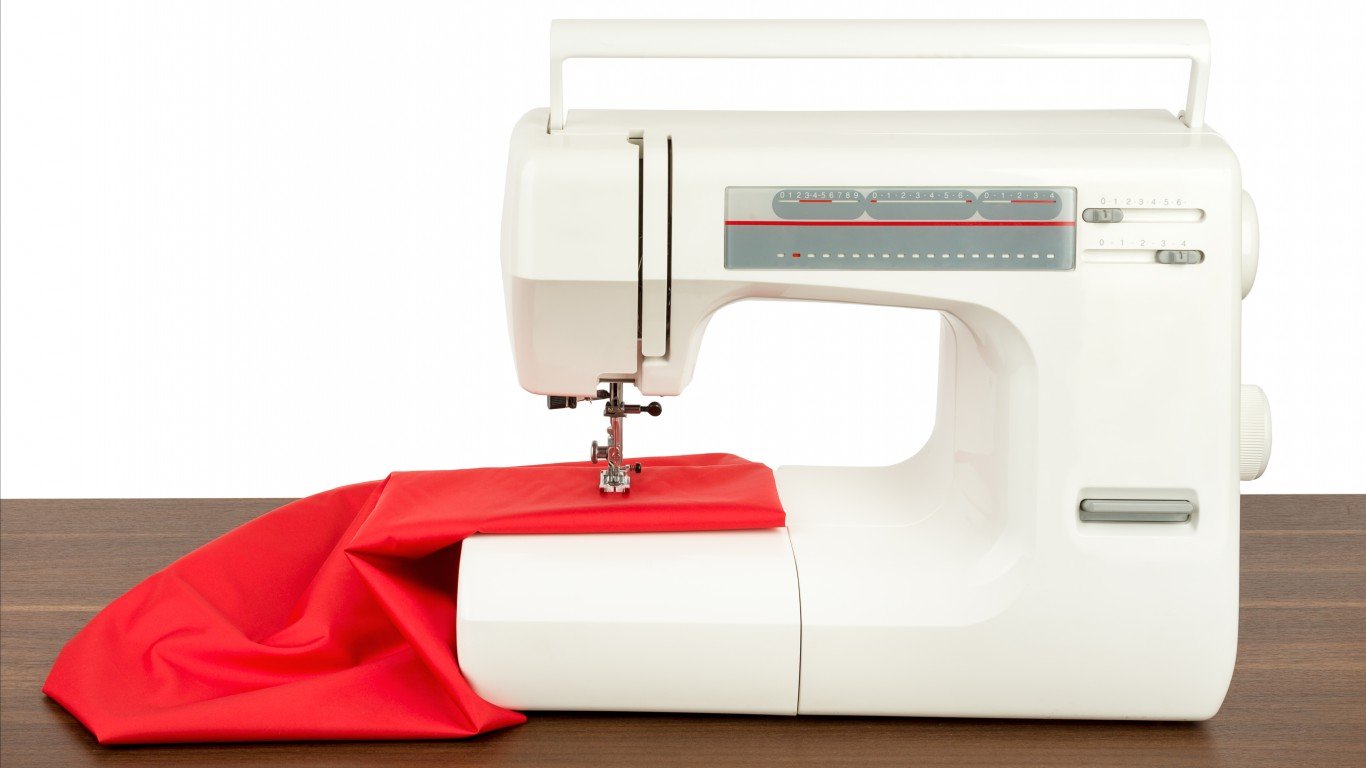
Electronic sewing machine
Sewing became a lot faster, not to mention easier, when Singer introduced the Athena 2000 in 1975. It was the world’s first electronic sewing machine. The device can do more complicated tricks, such as sewing decorative stitches in different shapes. It was all made possible by a tiny chip that had more than 8,000 transistors.

Electric oven control
General Electric introduced in 1967 the first electronic oven control. It was the start of what later became a revolution among all kinds of household appliances. Microprocessors were added to them to eliminate the need for human supervision as much as possible.

Smartphone
Electric appliances are also portable electronic devices, so the smartphone fits in that category. And it’s the ultimate appliance. Most people may think the iPhone was the first smartphone, but in reality it was invented in 1992, long before people even started using the term “smartphone.”
It combines many devices in one — a phone, a GPS, a calendar, alarm clock, planner, answering machine, a personal computer, and a TV. If you had to give up your phone or wallet, which one would you choose?
